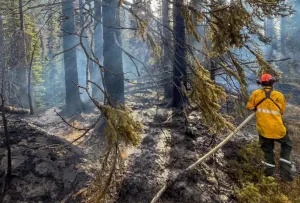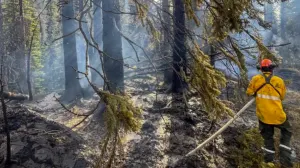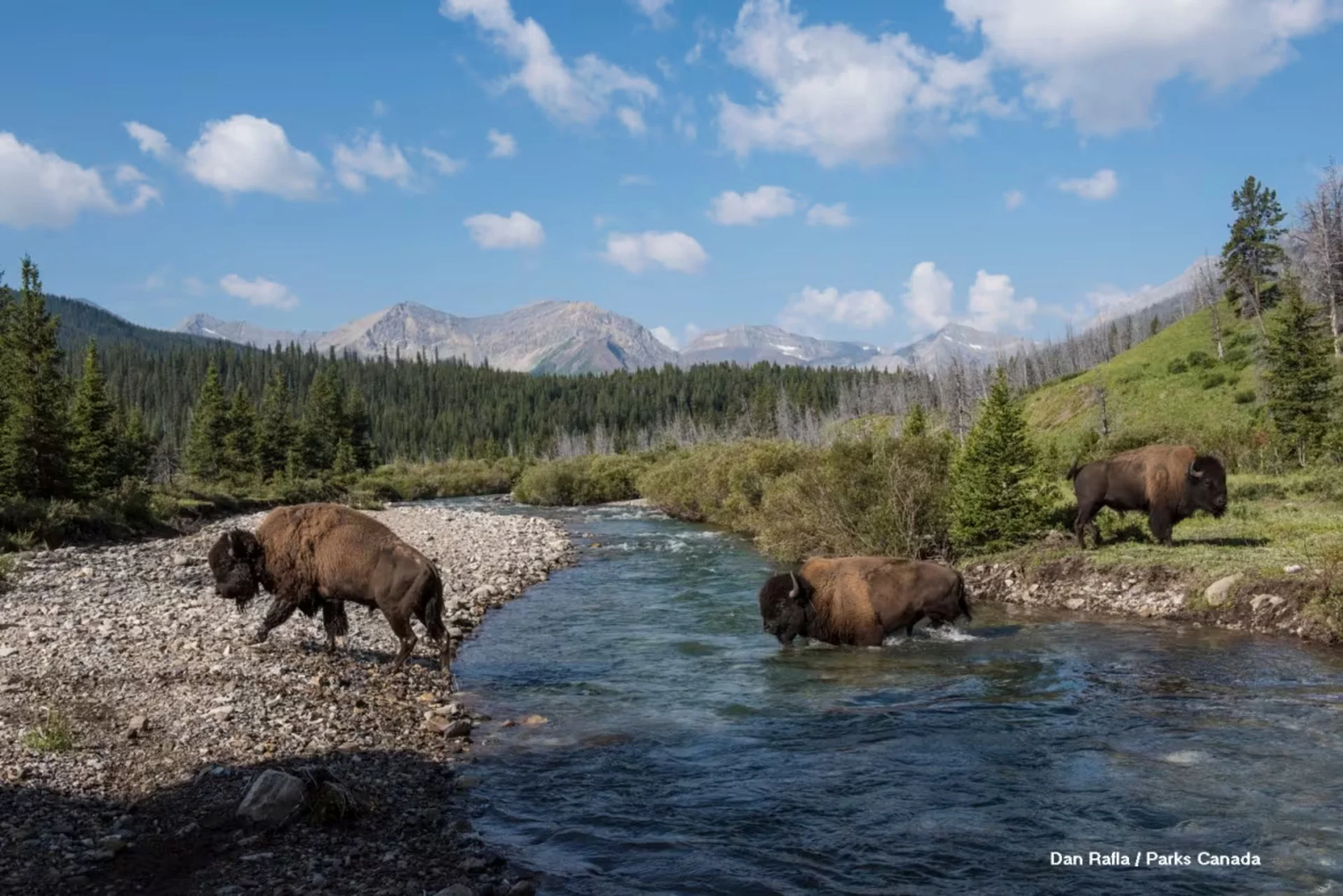
Researcher explores relationship between bison, landscape in Banff National Park
Visiting the bison herd in Banff National Park is quite the trek, not a trip meant for the average visitor.
But for researchers like Alexander Araujo, it's a worthwhile pilgrimage. A chance to observe as a species that was all but wiped from the Rockies returns home, and learns how to live in the mountainous region again.
"You walk on foot, you give yourself a couple of days and you know it's a bit of a pain to get in there sometimes literally," Araujo said. "Once you're actually in that section of the backcountry, it's absolutely breathtaking."
Araujo is a University of Manitoba master's student at the Natural Resources Institute.
For his master's thesis, he had two burning questions about the herd: what parts of the landscape do they prefer, and how is the bison's return being felt by the animals and environment around them — for that second question he wanted to study the abundance or absence of birds.
SEE ALSO: Great news: Canada's most endangered animal is making a comeback
"Where they're at, where they're going, and then in those areas they're visiting most often, how are they starting to change things in those regions and affecting other creatures," Araujo said in an interview on Daybreak Alberta.
Bison used to be abundant on the Great Plains, which stretch from north of Edmonton down to Texas. Small numbers roamed what is now Banff National Park for 10,000 years until they were nearly driven to extinction by human activity before the park's creation in 1885.
In 2017, Parks Canada embarked on a reintroduction project to return the animal to a remote area of Banff National Park's eastern slopes.
The herd started at just 31 animals and swelled over five years to more than 80.
Discovering old wallows and crashing through rivers, the bison have explored an area spanning 257 square kilometres within the 1,200-square-kilometre zone set out by Parks Canada. The zone is enforced with drift fences.
A majority of the exploration happened in the first year they were free to roam and were more curious about the new surroundings. But, as Araujo observed, the herd quickly fell into some habits.
"They're really attracted to burns," Araujo said.
As in, a forest that's seen fire.
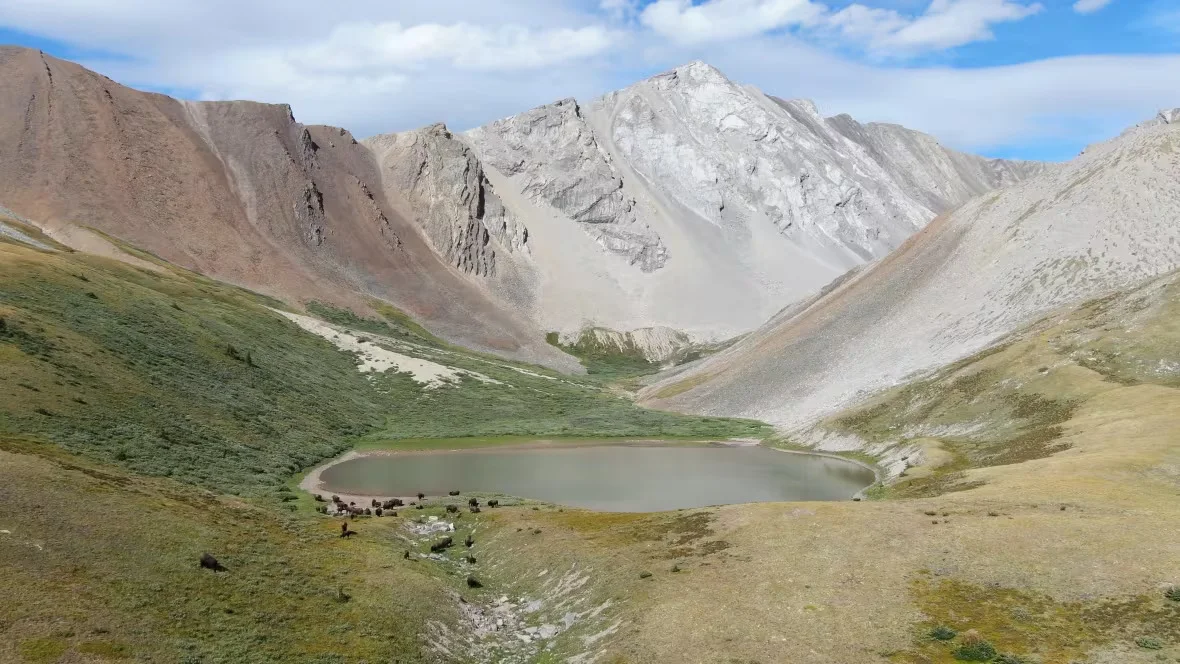
The herd is currently contained to a 1,200-square-kilometre reintroduction zone on Banff's eastern slopes. (Submitted by Parks Canada)
RELATED: Quesnel, B.C., turns to goats to help curb wildfire risk
Thanks to a dataset between 1909 and 2020, Araujo found bison were most likely to hang out in forests that have been burned. The animal was especially keen on land that had seen 10 or more forest fires in that same period.
This isn't surprising, Araujo said, because fire can create openings in forest canopy.
"There's suddenly light, there's a lot more nutrients after a fire and you have this vigorous regrowth," he said. "Very nutritious, highly palatable plant matter … it's just super tasty stuff for them."
Looking at the bird population, Araujo did find birds were flocking to hang out with the bison herd. But he's not sure if that was because of the bison themselves.
"When I started accounting for vegetation factors, that relationship was no longer significant."
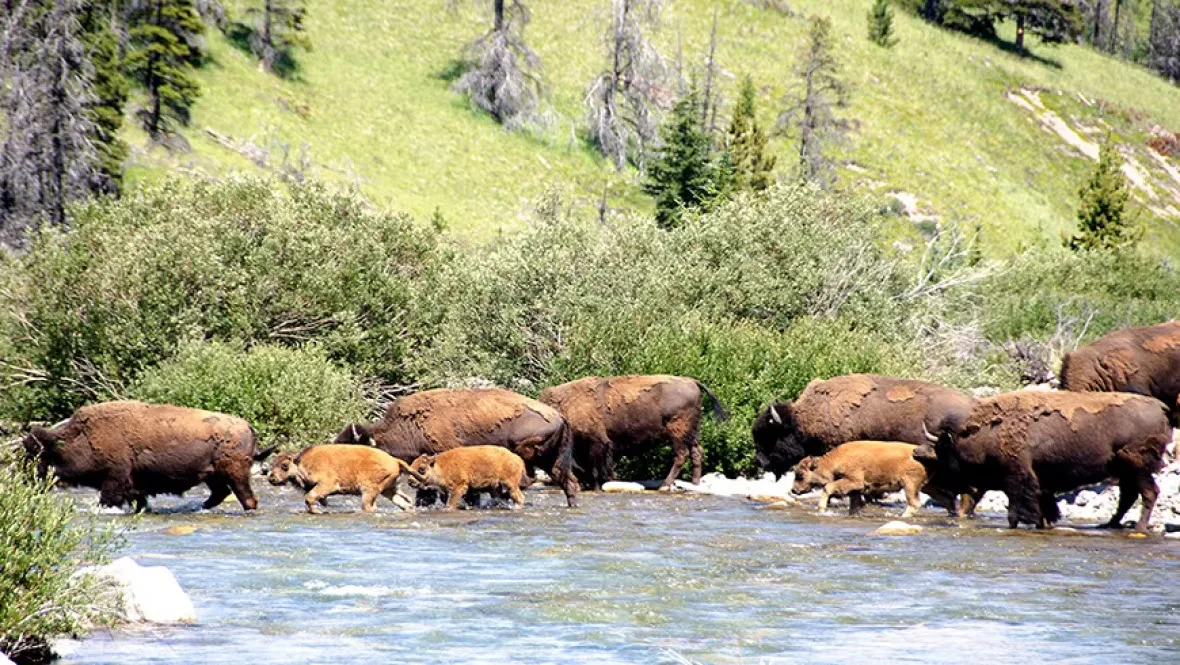
Bison calves walk with their guardians last summer in Banff's Panther Valley. (Karsten Heuer/Parks Canada)
Following this herd through reintroduction presents a tremendous opportunity, said Dr. Jodi Hilty, president and chief scientist of the Yellowstone to Yukon Conservation Initiative.
Not just for scientific reasons, but because the project could help restore biodiversity in the region.
READ MORE: We know the human costs of wildfires, but what about our wildlife?
Bison are known as ecosystem engineers, Hilty said.
"This happens through things like, you know, they have been known in some places to kill off some woody vegetation that you might see," Hilty said.
"They do a lot of wallowing and those wallows can provide really important places for bird species, for amphibians and other species."
Wallowing is when the bison roll about or lie in mud or water to keep cool or avoid insects. When a herd does this, it creates depressions on the landscape that catch rainwater and runoff.
The Banff herd is still in its infancy and set to grow. As for how will they will fare with the wolf populations or other predators, that remains to be seen.
So far, Hilty pointed to early learnings, like how bison poop affects insect and bird life; and some surprises, like, how much time the herd is spending in the sub-alpine.
In Banff, bison were the only large-hoofed grazing animal on the landscape.
"Bison are ruminants … they have multiple stomachs and they're like cows in that way compared to other animals like elk and deer that are not ruminants," Hilty said.
"How do they sort out what they're eating in that landscape and does that have benefits or does it compete with other animals? It'll be interesting to see what happens."
Thumbnail courtesy of Dan Rafla/Parks Canada
This article was originally published for CBC News.







